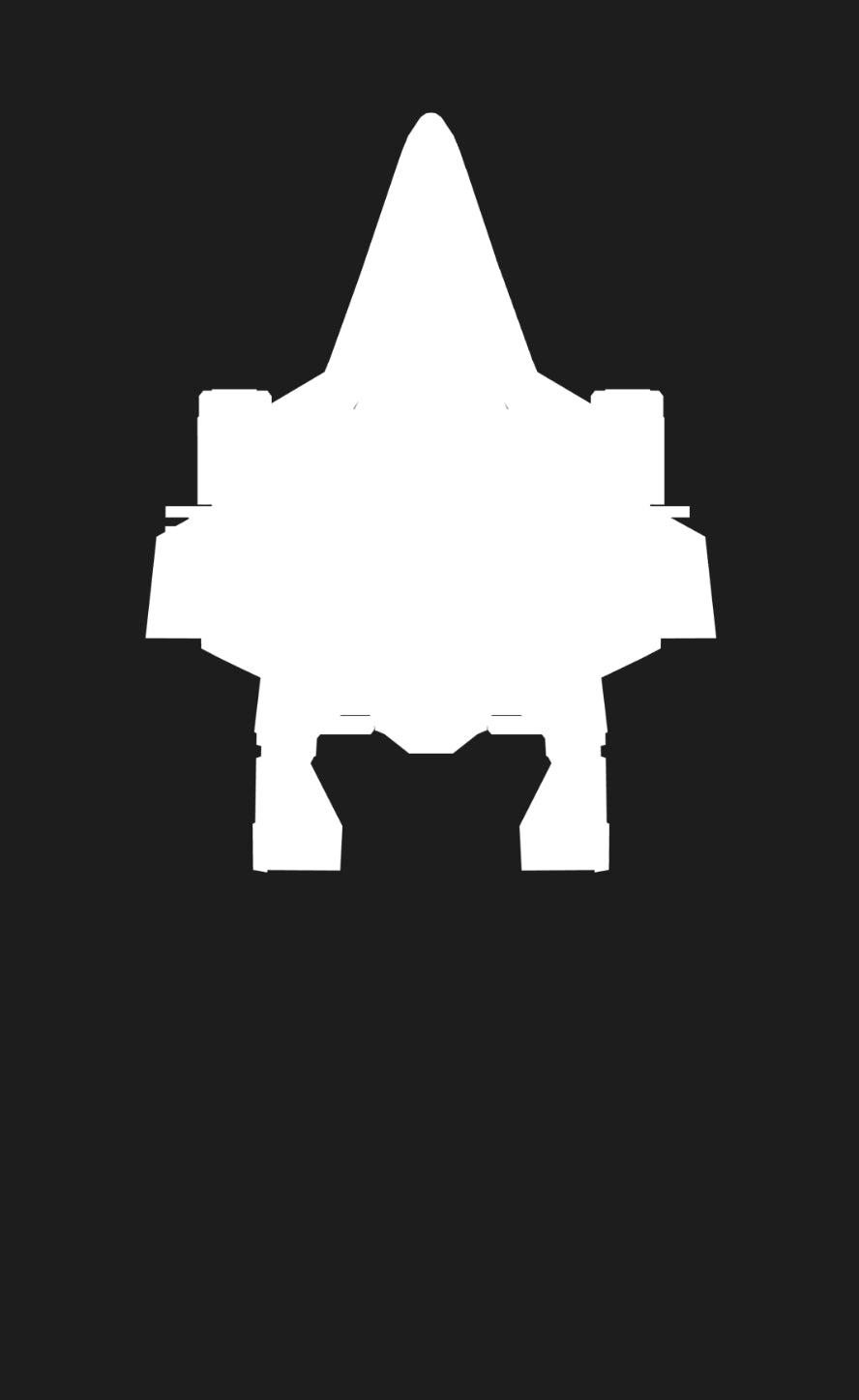
Perseus - The Most Anticipated Gunship
Every generation of pilots gets one ship that makes them grin like a lunatic the moment the engines spool up. For the current cycle, that ship is the RSI Perseus, the so-called Gunboat. It’s the middle child of the warship family, snuggled between the disciplined Hammerhead and the glamorous Polaris, but make no mistake: this thing doesn’t do middle ground. It’s a floating declaration that if diplomacy fails, there’s always the option of high-velocity persuasion.
At a modest-ish 100 metres long and 50 metres wide, the Perseus is what happens when a design team decides to fit the personality of a battleship into a ship barely large enough to dock without apologising.

Birth of a War Machine
The Perseus began as an idea scribbled somewhere between “not another destroyer” and “we need something that terrifies frigates.” The brief was simple: create a heavy point-defence ship that could take on sub-capital threats without needing a small nation’s navy to back it up.
And thus, in the great halls of RSI, the engineers forged a vessel that doesn’t swarm its enemies-it punctuates them. Two manned turrets with twin Size 7 ballistic cannons form its frown, while a pair of auto-remote turrets with Size 3 Gatlings handle the close-quarters hecklers. If that doesn’t end the conversation, it carries two torpedo launchers, each with ten Size 5 warheads ready to rewrite the opposing fleet’s life choices.

Forged in Iron and Fury
The designers took their cue from ancient history-specifically, the ironclad gunboats of the American Civil War. Those compact, armour-plated monsters changed naval warfare forever, and RSI’s engineers clearly looked at that chapter and thought, “Yes, but make it fly.”
The development process was a saga of sketches, 3D models, and panicked coffee breaks. Dozens of silhouettes were tested-arrowheads, split hulls, ringed drives, even something that looked worryingly like a space pineapple, until one design emerged: a hulking, forward-leaning ship with an elevated bridge and chunky, aggressive turrets. The result was unmistakably RSI, but with an attitude problem.
The “Rule of Cool” guided everything. If a component didn’t look mean enough to scare asteroids out of orbit, it was redesigned.

Anatomy of a Gunship
Step aboard, and the Perseus feels like an industrial cathedral. The bridge sits high and forward, giving commanding visibility over whatever unfortunate patch of vacuum you’re about to redecorate.

The interior is designed for a crew of six, a tight team of professionals, or a very loud group of friends. You’ll find crew quarters, a mess room with a holoscreen, an engineering bay, and yes, a captain’s cabin complete with desk, bed, and the sort of minimalist toilet that reminds you rank has privileges.

A cargo bay and torpedo magazine connect via an elevated walkway, allowing you to stride dramatically while quoting regulations. Animated torpedo racks line the walls, ready to slide new warheads into launch tubes with the mechanical grace of a ballet choreographed by explosions.

Externally, the Perseus bristles with attitude. VTOL thrusters and twin main engines provide surprising agility for a ship this boxy. Its CIWS-style top turret watches the skies like an angry hawk with caffeine jitters, while the under-slung cannons swivel menacingly even when powered down. You don’t look at a Perseus; you try not to make eye contact.

The Fleet Defender’s Heart
Where the Hammerhead excels at swatting fighters, the Perseus thrives on hunting bigger game, corvettes, gunships, even small capital vessels foolish enough to wander into range. Its design philosophy screams “self-reliant dread.” It doesn’t hide behind escorts; it is the escort.
In fleet formations, it plays bodyguard to larger ships like the Polaris, drawing fire and returning it with interest. Yet it’s compact enough to operate independently, perfect for small organizations that want to punch well above their weight—or lone captains with delusions of grandeur and a few brave friends.

Legacy of the Ironclad
The Perseus stands as RSI’s tribute to a bygone era of warship design, when armour and artillery ruled the waves. Its silhouette evokes those 19th-century river juggernauts, only now the rivers are made of stars.
From the first sketch to its final concept, every iteration pulled it closer to that vision: a floating artillery platform that channels history’s grit through modern engineering. It’s not just another capital ship. It’s a statement: “We remember when ships were built to win wars, not popularity contests.”

Technical Specifications
| Category | Detail |
|---|---|
| Manufacturer | Roberts Space Industries |
| Role | Heavy Gunboat / Fleet Defender |
| Length | 100 m |
| Beam (Width) | 50 m |
| Height | 20 m |
| Crew Complement | Up to 6 |
| Main Weaponry | 2 × Manned Twin Size 7 Ballistic Cannons |
| Secondary Armament | 2 × Remote Twin Size 3 Ballistic Gatlings |
| Missile / Torpedo Systems | 2 × Launchers (10 × Size 5 Torpedoes each) |
| Defensive Systems | CIWS-style Upper Turret, Armoured Hull |
| Engines / Propulsion | Twin Main Engines + VTOL Thrusters |
| Quantum Drive | RSI Gwendom Drive System |
| Cargo Capacity | Moderate (optimized for munitions and equipment) |
| Intended Use | Fleet Support, Anti-Corvette Operations, Tactical Assault |
Closing Remarks
The RSI Perseus is not a ship that asks for attention; it demands it, then provides the soundtrack via twin Size 7 cannons. It’s equal parts nostalgia and nightmare fuel, an ode to naval heritage wrapped in futuristic aggression.
So, if you ever find yourself drifting through the ‘Verse and see a silhouette on the horizon that looks suspiciously like a fortress having a midlife crisis, don’t worry. It’s just the Perseus, quietly reminding the galaxy that diplomacy is optional.
































